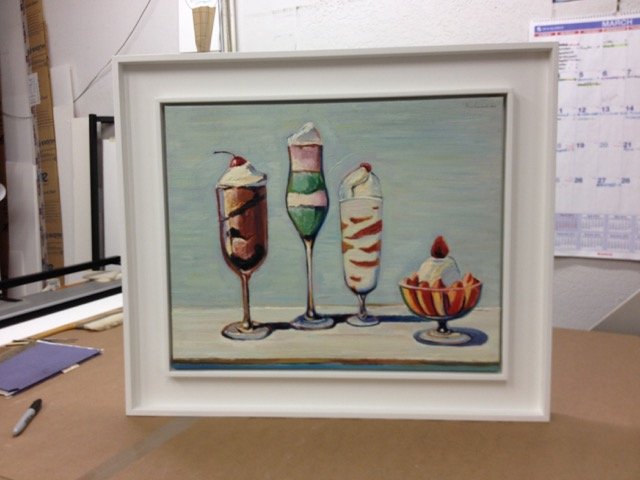Museum Quality Fine Art Framing
JDewers provides museum quality framing based on Janos’ extensive experience working in the art conservation field for over 16 years. Framing is the creation of a storage container, that allows you and generations to come to see the contents. Improper framing is the greatest cause of deterioration of artwork.
Museum Quality Framing Includes:
Using archival methods and materials as approved by the Library of Congress (See below for more information on methods and materials).
Preservation glazing with Museum Glass and Optium Museum Acrylic
Hinging your artwork with Japanese tissue and starch paste
All framing methods are easily reversible without any damage to the art
Archival Methods & Materials:
Museum quality conservation framing uses acid-free, buffered materials to prevent the development of acids in the future. Using pH neutral adhesives or tapes, 100% rag museum boards for matting (should also be acid and lignin-free, and colored boards should be bleed and fade resistant).
The only proper method for hinging to the artwork is with acid-free Japanese tissue. Wheat starch or rice starch paste are the only acceptable adhesive, as they are acid-free and reversible. Non-adhesive methods of mounting may be used instead of hinges. One of these methods is the use of corner supports, consisting of paper of plastic envelopes which are folded over the corners of the artwork.
When a mat is not used, the object should be hinged to a backing of archival board and framed so that it is not in contact with the glazing or the frame interior.
A spacer assures a gap is kept between the glazing and the object. Spacers should be non-acidic and chemically stable.
Glazing the artwork with UV filtering glass or acrylic is necessary to stop fading of the artwork.
The frame package should be as air tight as possible to keep out dirt and pollutants and to stabilize the interior against short-term fluctuations in environmental temperature and humidity.





